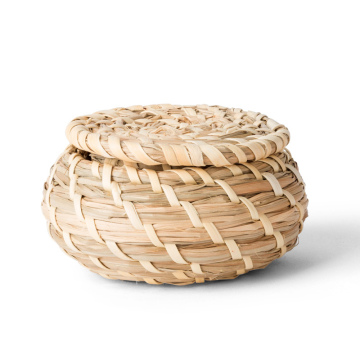The History of Tokyo Banana: Japan’s Most Iconic Culinary Souvenir Snack
When it comes to Japanese souvenir snacks, few treats are as beloved and instantly recognizable as Tokyo Banana (東京ばな奈). This soft, fluffy sponge cake filled with rich, creamy banana custard has become a symbol of Tokyo’s confectionery culture and a must-buy souvenir for visitors to Japan’s capital. More than just a snack, Tokyo Banana represents Japan’s culinary innovation, blending elegance, nostalgia, and modern flavors into a single bite.
Origins: The Birth of Tokyo Banana
Tokyo Banana was first introduced in 1991 by Grapestone Co., Ltd., a Japanese confectionery company. At the time, Japan’s omiyage (souvenir) culture was already well established, with travelers bringing back regional specialties as gifts for family, friends, and coworkers. However, most traditional omiyage sweets were based on classic wagashi (Japanese sweets), such as mochi or manju.
Recognizing a demand for a modern, Western-style souvenir treat, Grapestone set out to create a unique confection that would represent Tokyo’s culinary and cultural sophistication. The result was Tokyo Banana, a soft sponge cake filled with a smooth banana custard, designed to be both delicious and visually appealing.
Why Banana? A Culinary Twist on Japanese Sweets
The choice of banana flavor was an unusual yet strategic culinary decision. While bananas were not native to Japan, they had become a symbol of luxury in the early 20th century. Imported bananas were once a rare and expensive delicacy, enjoyed mainly by the wealthy. By the late 20th century, bananas had become widely available and were a staple in Japanese home cooking and desserts.
By incorporating banana custard into a Western-style sponge cake, Tokyo Banana offered something familiar yet unique, setting itself apart from traditional Japanese confections. The brand’s slogan, “Tokyo Banana: People Make Tokyo, Tokyo Makes People”, reinforced its identity as a modern Tokyo souvenir, perfect for gifting.
Rise to Popularity: A Culinary and Commercial Success
Since its launch in 1991, Tokyo Banana quickly became one of Japan’s best-selling souvenir sweets. Several factors contributed to its rapid rise in popularity:
- Perfect for Omiyage (Souvenirs) – The individually wrapped cakes are easy to transport, have a soft yet durable texture, and have a shelf life long enough for travelers to bring them home.
- Elegant Packaging & Branding – Tokyo Banana’s packaging features simple yet sophisticated designs, often incorporating floral or ribbon patterns, making it an ideal gift.
- Limited-Edition Flavors – Tokyo Banana introduced seasonal and regional variations, creating excitement and exclusivity.
- Omotenashi (Japanese Hospitality) – The treat embodies Japan’s culinary philosophy of hospitality, offering a gentle, comforting flavor that appeals to all ages.
Within a few years, Tokyo Banana became the ultimate Tokyo souvenir, available at major train stations, airports, and department stores across Japan.
Culinary Evolution: Variations and Innovations
While the original Tokyo Banana remains the most popular, the brand has expanded to include new flavors and designs, reflecting Japan’s culinary creativity.
Popular Variations:
- Tokyo Banana Original – The classic soft sponge cake filled with rich banana custard.
- Tokyo Banana Honey Banana – Infused with a delicate honey flavor for a natural sweetness.
- Tokyo Banana Caramel – Features a caramelized banana filling for a deeper, toasty sweetness.
- Tokyo Banana Chocolate Banana – A cocoa-infused sponge with a chocolatey banana custard.
- Tokyo Banana Panda & Tokyo Banana Leopard – Limited-edition versions with cute animal-print patterns on the sponge.
- Collaboration Flavors – Tokyo Banana has teamed up with brands like Disney and Pokémon, creating adorable designs featuring characters like Mickey Mouse and Pikachu.
These innovative flavors and designs have kept Tokyo Banana fresh and exciting, ensuring its continued dominance in Japan’s culinary souvenir market.
Cultural Impact: A Culinary Icon of Tokyo
Tokyo Banana is more than just a snack—it has become a culinary symbol of Tokyo. Whether it’s a first-time visitor buying their first box at Narita Airport or a local gifting it to friends abroad, Tokyo Banana represents the modern and elegant essence of the city.
Key Cultural Influences:
- A Staple of Japanese Travel Culture – It is often featured in train station kiosks, airport duty-free shops, and department stores, reinforcing its status as a top-tier omiyage.
- A Representation of Tokyo’s Culinary Refinement – Its delicate texture and mild sweetness align with Japan’s preference for subtle, well-balanced flavors.
- A Social and Digital Phenomenon – Tokyo Banana has gained a global following, with tourists sharing their purchases on social media, fueling its worldwide recognition.
How Tokyo Banana is Made: A Culinary Process of Perfection
The success of Tokyo Banana lies in its delicate balance of texture and flavor. The manufacturing process is carefully designed to maintain its signature softness and creaminess.
Step-by-Step Culinary Process:
- Creating the Sponge Cake – The batter is made with high-quality flour, eggs, and a touch of vanilla, ensuring a light and airy texture.
- Baking to Perfection – The sponge is baked at a precise temperature, giving it a golden color and fluffy consistency.
- Crafting the Banana Custard – The custard is made using pureed bananas, milk, sugar, and a hint of cream, resulting in a smooth and rich filling.
- Filling and Folding – The sponge cake is carefully wrapped around the banana custard, creating its signature oval shape.
- Individually Wrapped for Freshness – Each Tokyo Banana is sealed in special packaging to maintain freshness and moisture.
This meticulous culinary craftsmanship ensures that every Tokyo Banana delivers the perfect balance of soft, creamy, and sweet flavors.
Tokyo Banana’s Global Popularity and Future
As Japan’s culinary scene continues to evolve, Tokyo Banana remains a timeless favorite. The brand has expanded its reach beyond Japan, with pop-up stores and special editions appearing in international locations, such as Taiwan, Hong Kong, and Singapore.
With growing interest in Japanese sweets worldwide, Tokyo Banana’s combination of nostalgia, innovation, and quality ensures that it will remain a beloved culinary souvenir for years to come.
Conclusion
Tokyo Banana is more than just a delicious sponge cake—it is a culinary masterpiece that embodies the essence of Tokyo. From its humble beginnings in 1991 to becoming Japan’s most iconic souvenir snack, it has captivated millions with its soft texture, creamy banana custard, and ever-evolving flavors.
Whether enjoyed as a gift, a travel memory, or a personal indulgence, Tokyo Banana continues to be a symbol of Japan’s dedication to culinary excellence and innovation.





